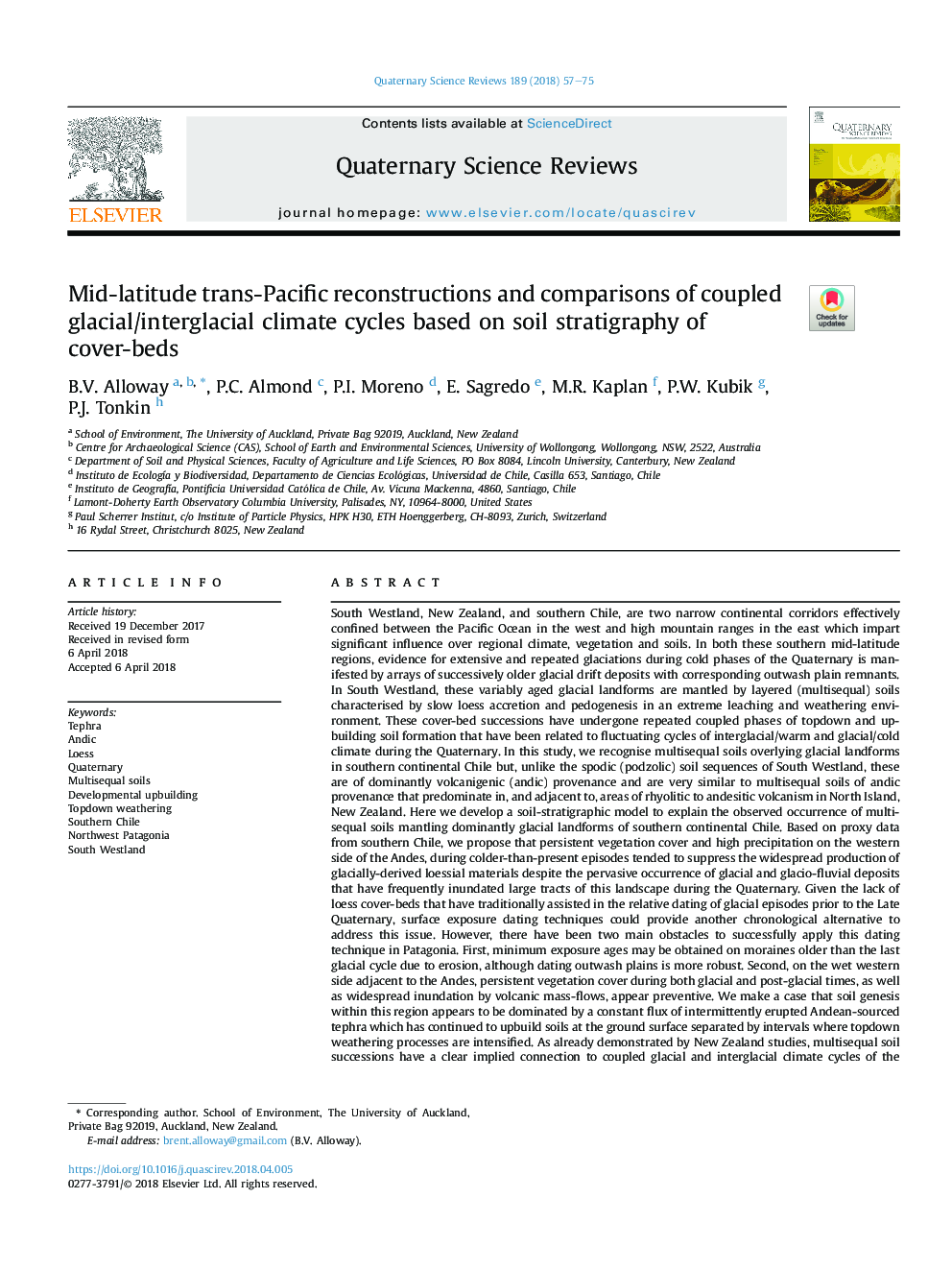| کد مقاله | کد نشریه | سال انتشار | مقاله انگلیسی | نسخه تمام متن |
|---|---|---|---|---|
| 8914810 | 1640746 | 2018 | 19 صفحه PDF | دانلود رایگان |
عنوان انگلیسی مقاله ISI
Mid-latitude trans-Pacific reconstructions and comparisons of coupled glacial/interglacial climate cycles based on soil stratigraphy of cover-beds
ترجمه فارسی عنوان
بازسازی و بازسازی مقاطع عرضی عرضی و مقایسه چرخه های آب و هوایی یخچالی / بینشی دریایی با توجه به چشمه خاک خاکی
دانلود مقاله + سفارش ترجمه
دانلود مقاله ISI انگلیسی
رایگان برای ایرانیان
کلمات کلیدی
تفرا، اندیک، لس کواترنر، خاک های کوچک، توسعه پاکسازی آلودگی به سطح پایین جنوب شیلی، شمال غرب پاتاگونیا، جنوب غربی،
موضوعات مرتبط
مهندسی و علوم پایه
علوم زمین و سیارات
زمین شناسی
چکیده انگلیسی
South Westland, New Zealand, and southern Chile, are two narrow continental corridors effectively confined between the Pacific Ocean in the west and high mountain ranges in the east which impart significant influence over regional climate, vegetation and soils. In both these southern mid-latitude regions, evidence for extensive and repeated glaciations during cold phases of the Quaternary is manifested by arrays of successively older glacial drift deposits with corresponding outwash plain remnants. In South Westland, these variably aged glacial landforms are mantled by layered (multisequal) soils characterised by slow loess accretion and pedogenesis in an extreme leaching and weathering environment. These cover-bed successions have undergone repeated coupled phases of topdown and upbuilding soil formation that have been related to fluctuating cycles of interglacial/warm and glacial/cold climate during the Quaternary. In this study, we recognise multisequal soils overlying glacial landforms in southern continental Chile but, unlike the spodic (podzolic) soil sequences of South Westland, these are of dominantly volcanigenic (andic) provenance and are very similar to multisequal soils of andic provenance that predominate in, and adjacent to, areas of rhyolitic to andesitic volcanism in North Island, New Zealand. Here we develop a soil-stratigraphic model to explain the observed occurrence of multisequal soils mantling dominantly glacial landforms of southern continental Chile. Based on proxy data from southern Chile, we propose that persistent vegetation cover and high precipitation on the western side of the Andes, during colder-than-present episodes tended to suppress the widespread production of glacially-derived loessial materials despite the pervasive occurrence of glacial and glacio-fluvial deposits that have frequently inundated large tracts of this landscape during the Quaternary. Given the lack of loess cover-beds that have traditionally assisted in the relative dating of glacial episodes prior to the Late Quaternary, surface exposure dating techniques could provide another chronological alternative to address this issue. However, there have been two main obstacles to successfully apply this dating technique in Patagonia. First, minimum exposure ages may be obtained on moraines older than the last glacial cycle due to erosion, although dating outwash plains is more robust. Second, on the wet western side adjacent to the Andes, persistent vegetation cover during both glacial and post-glacial times, as well as widespread inundation by volcanic mass-flows, appear preventive. We make a case that soil genesis within this region appears to be dominated by a constant flux of intermittently erupted Andean-sourced tephra which has continued to upbuild soils at the ground surface separated by intervals where topdown weathering processes are intensified. As already demonstrated by New Zealand studies, multisequal soil successions have a clear implied connection to coupled glacial and interglacial climate cycles of the Quaternary. On this basis, similar sequences in northwest Patagonia provide a relatively untapped archive to enable Quaternary glacial and environmental changes in this pervasively glaciated volcanic region to be constructed.
ناشر
Database: Elsevier - ScienceDirect (ساینس دایرکت)
Journal: Quaternary Science Reviews - Volume 189, 1 June 2018, Pages 57-75
Journal: Quaternary Science Reviews - Volume 189, 1 June 2018, Pages 57-75
نویسندگان
B.V. Alloway, P.C. Almond, P.I. Moreno, E. Sagredo, M.R. Kaplan, P.W. Kubik, P.J. Tonkin,
